Beauty, as they say, is in the eye of the beholder. If someone were to walk up to you right now and ask you to name the most gorgeous game that you could think of, you might find yourself stopping to consider just what they mean when they use the term “gorgeous”. For you, a gorgeous game might be a game that has elegant mechanics… or it might be a game that gives you a feeling of elation whenever you play it… or it might be a game that’s always pleasing and fun to play… or any other number of things. Being asked a question like that is never easy to answer because there’s no clearly defined definition for the descriptor “gorgeous”.
There are a lot of games with amazing artwork, but there are very few that come together artwise to create a visually impactful whole. For instance, while Blood Rage might have some amazing looking miniatures, the game board itself, while artistically well done, doesn’t really compliment the miniatures. The beauty inherent in that game is really in the gameplay itself. For the purposes of this article, when I use the term “gorgeous”, I am speaking of a game which has a very strong visual appeal once it’s hit the table… a game that could just as easily be hanging on the wall of an art museum. A lot of the games on this list start out looking pretty good and just get better and better as the game wears on. So, without further adieu, here are my picks (in no particular order) for the Top 6 Most Gorgeous Games.
Indigo
This game designed by Reiner Knizia is a game of tile laying and path building. In the center of the gameboard are a few stones that the players are attempting to remove from the board through their own gates, arranged along the outer edges of the board so that they can get points. This is achieved through the process of laying tiles on the board which contain paths that these stones will follow. This mechanic will be familiar to anyone that has ever played Tsuro.

But, what really stands out about this game is the artwork. This game is beautiful. Even before you begin laying down tiles, it’s already got your attention. As the game goes on, what emerges is one of the loveliest visions you’ll ever lay your eyes upon in a board game.
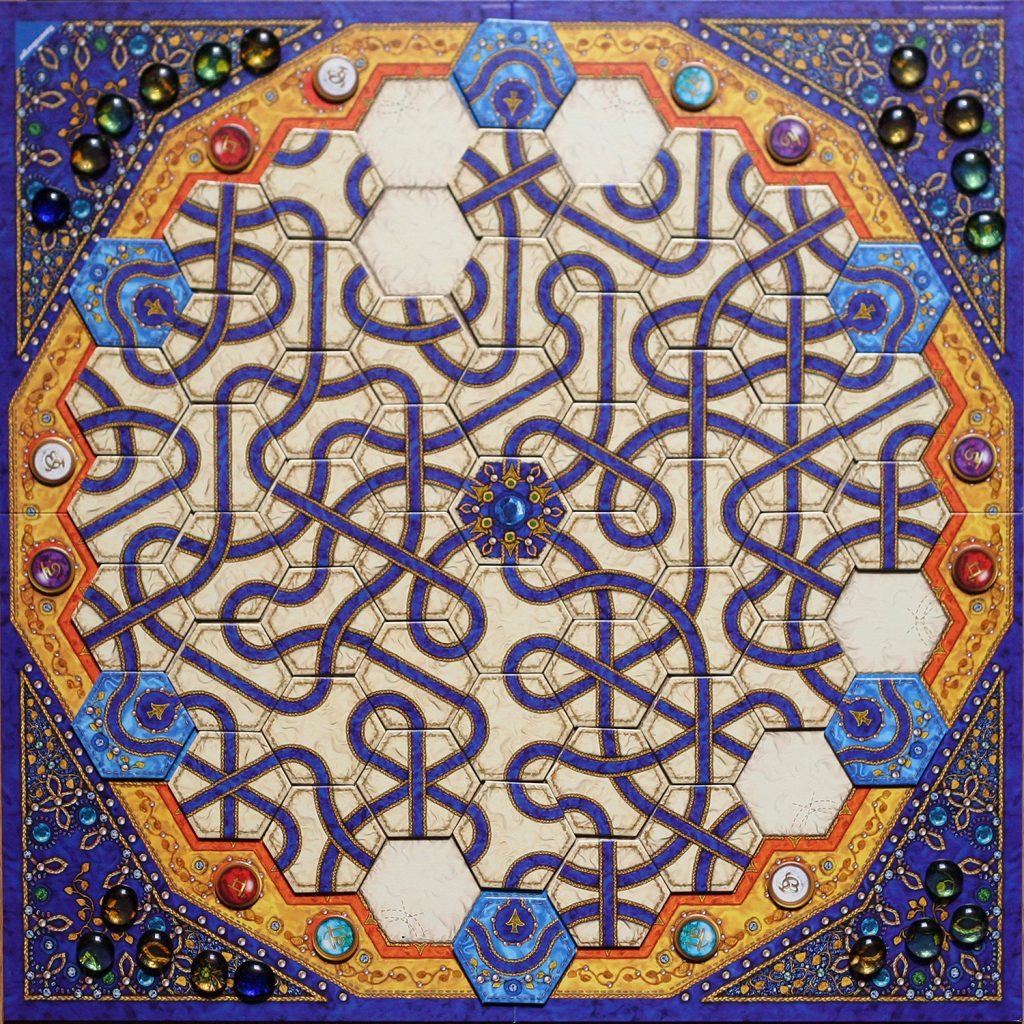
The artists, Eckhard Freytag and Walter Pepperle should be commended for the amazing job that they’ve done here. The blues and golds, the beaded glass, and the tiny filigree details around the borders and in the corners combine to create a game that is breathtaking to behold.
Sagrada
Sagrada, designed by Adrian Adamescu and Daryl Andrews, has players drafting dice and adding them to their player boards to fill in their stained glass windows and try to earn the most points. That’s an oversimplification and if you’d like to know more about how the game is played, then check out our review of Sagrada.

Like most of the games on this list, aside from the gameplay, Sagrada is really notable for the incredible artwork. Even before a single die is placed, the game already looks great and, as the dice begin to come out, it only gets better. By the end of the game, each player will be looking down at an amazing piece of art that definitely evinces the feeling of an awe-inspiring stained glass window. Peter Wocken’s artwork really seals the deal here and the choice of using transparent dice (whoever’s idea that was) is brilliant. If the game used opaque dice, it would just be another game with an interesting idea. It certainly wouldn’t stand out as it does now. Sagrada’s one of the most eye-catching games I have ever seen.
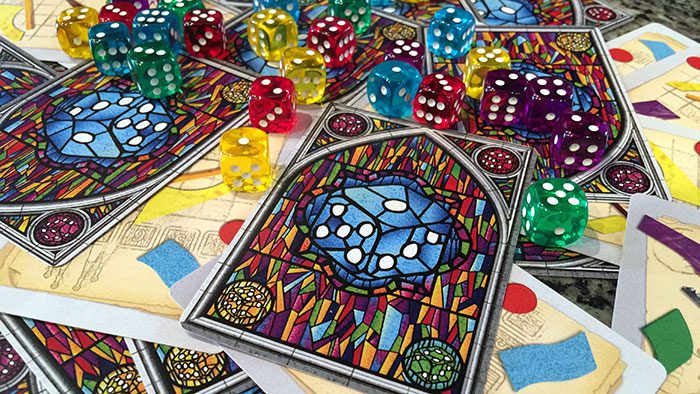
Lanterns: the Harvest Festival
Lanterns: the Harvest Festival, designed by Christopher Chung, illustrated by Beth Sobel and a team of graphic designers – Jason D. Kingsley, Alexey Kot, Christina Major, Tyler Segel – sees the players adding lantern tiles to an ever-expanding, ever-changing play area as they seek to create beautiful lantern displays in order to earn lantern cards which can then be traded in for victory point tiles of different values. On the face of it, it seems like a pretty straightforward game, but laying those tiles also helps your opponents and it is only through the careful manipulation of this mechanic that you’ll come out on top.
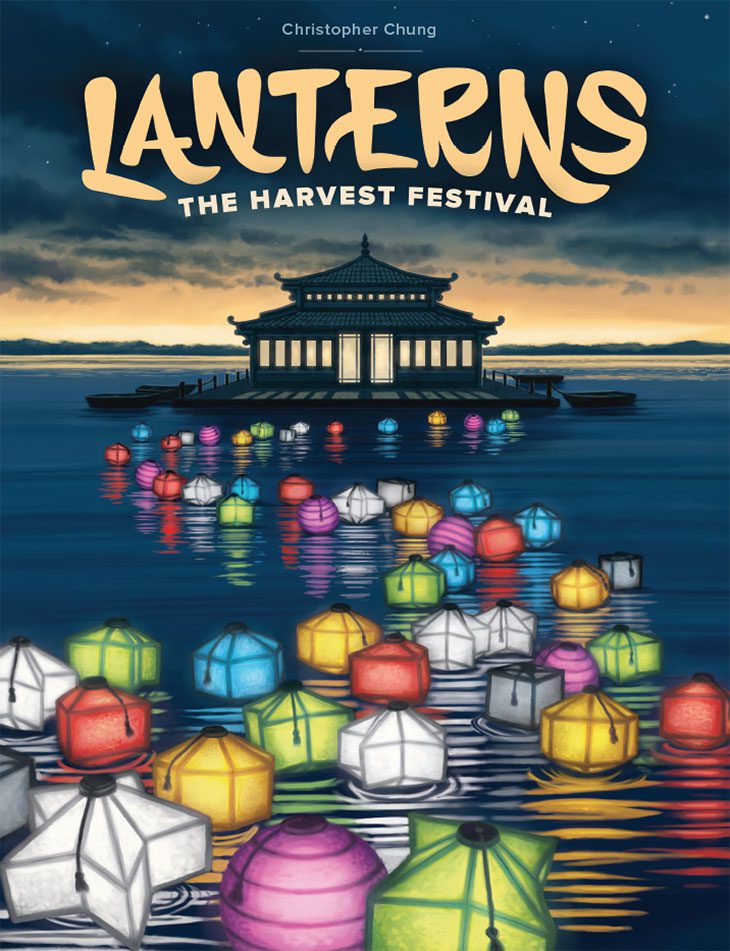
But, this isn’t a review of Lanterns. This is an article about gorgeous games and Lanterns certainly fits the bill. Before you’ve even opened the box, you’re welcomed in by the attractive illustration on the front of the box itself. It isn’t until you’ve started playing, though, that it really begins to come together. At the beginning of the game, there’s a single, beautifully illustrated tile in play. As the game goes by and more and more tiles are added to the tableau, an amazing lantern display begins to appear. It’s enough to make you wish you could go inside of the game and witness the display firsthand.
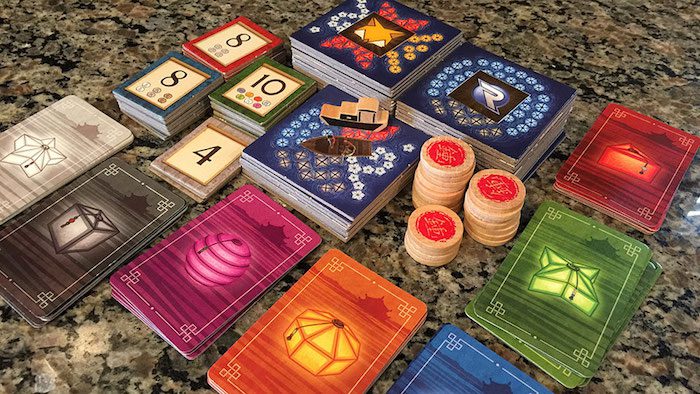
If you’d like to know more about this amazing game, then check out our review of Lanterns.
Santorini
Designed by Gordon Hamilton, Santorini pits 2 to 4 players against one another as they compete to construct buildings, section by section until one of them successfully assembles a building that is three levels tall. Building construction can be blocked by adding a roof to a building. Each player also receives a card which provides them with a special power that allows them to alter the rules of the game slightly in their favor.

Santorini’s a pretty unassuming game when it’s first set up. It’s little more than a green field set atop a really cool 3D mountaintop. But, as the buildings start springing up, the visual appeal of the game really ramps up. When it’s all said and done, the end result is a game that is not only fun and challenging to play, but a real pleasure to look at as well. The excellent art design of Lina Cossette and David Forest really makes this game pop. From the artwork on the cards, to the sculpt and color of the buildings, to those famous blue roofs, this game just looks magnificent when it’s set up on a table. The color palette in the game is simple and basic and that’s why it works so well.
If you’d like to know more about how the game is played, then we encourage you to check out our review of Santorini.
Lotus
In the game of Lotus, created by Jordan and Mandy Goddard, each player begins the game with a handful of cards that they use to build flowers in a common play area. Whoever has played the most cards to a flower once the flower is completed wins the flower, collects the cards, and receives points for the collected cards at the end of the game. The players also have an assortment of wooden “Guardians” that they can deploy to the cards to help them gain or maintain control of the various flowers. There’s a lot more to this game than I have mentioned here, but this is the gist of it. If you’d like to know even more, then check out our review of Lotus.
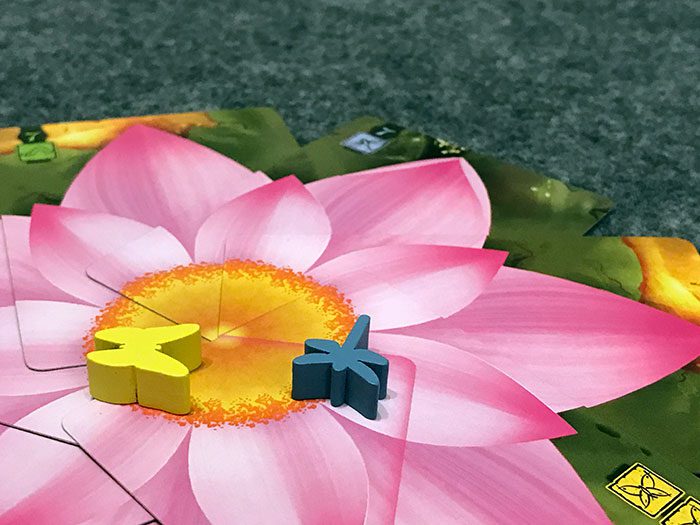
What really shines about Lotus, though, is its table presence. The way that the cards overlap to form the petals of various flowers is pure genius. Once the various flowers have started coming together, the brilliant colors and the fanning of the cards bring the game to life. Chris Ostrowski’s artwork really brings the game together and really makes it pop. Lotus is just a brilliantly beautiful game.
Tokaido
The game of Tokaido, designed by Antoine Bauza, follows the players from one end of the game board to the other as they go on a journey. Along the way, they will interact with the various structures they encounter to draw and collect various cards for victory points. There’s a lot of juxtapositioning going on during the game and this can be very important as it has a direct effect on turn order.

Whereas most of the games on this list are virtual explosions of color, Tokaido takes a more minimalist approach. And, boy, does it work! The artist, Xavier Gueniffey Durin, has done some amazing work here. Most of the game board in Tokaido is negative white space and it’s the negative space that’s the real hero. It not only serves as a backdrop for the color splashed here and there, but it elevates it. It makes it pop and it’s a brilliant choice of color palette, too. Also of particular note are the panorama cards that the players will be acquiring throughout the game. These panoramas are simply stunning. Combine all of these things with the elegant patterns and swirls and filigree and you’ve got yourself a game that you can’t take your eyes off of.
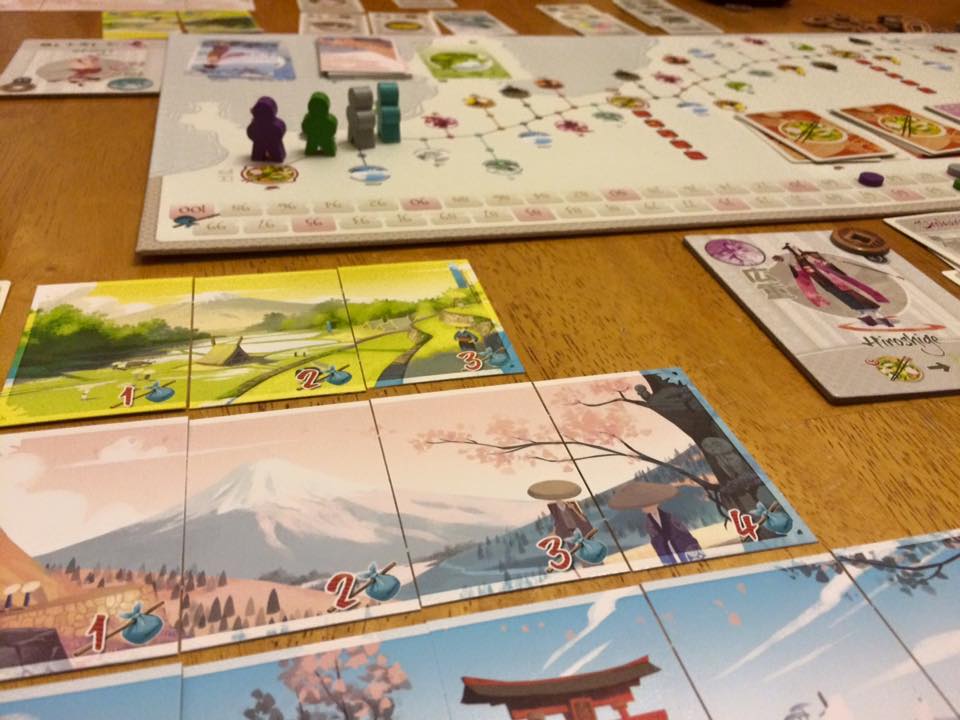
Now, it wasn’t easy choosing which games to add to this list. There were a lot of good options, but I really felt that the games that I have mentioned really exemplified the definition of “gorgeous” that I was going for. Do you agree with my picks? Is there another game that you think deserves a spot on this list more than one of the others? Tell us your thoughts in the comments!


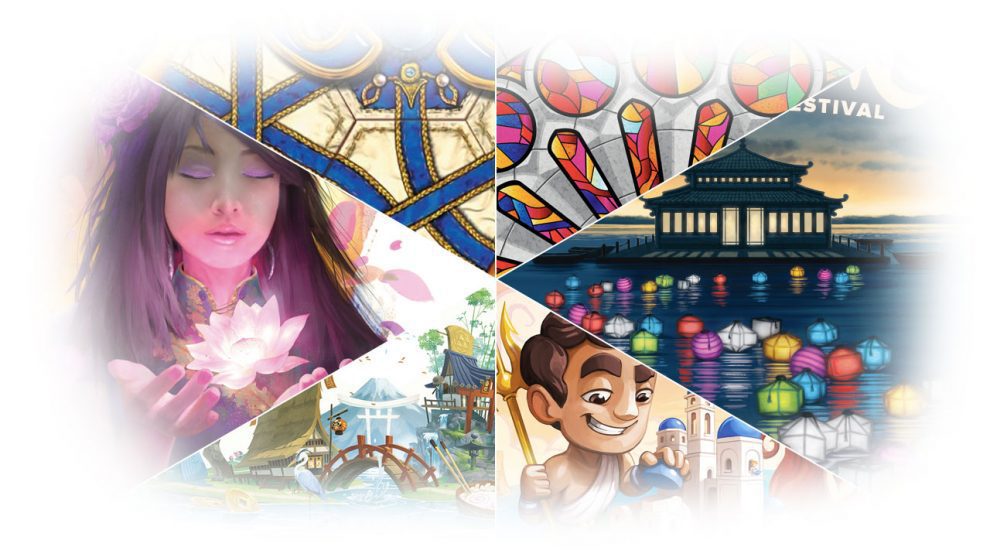








Add Comment